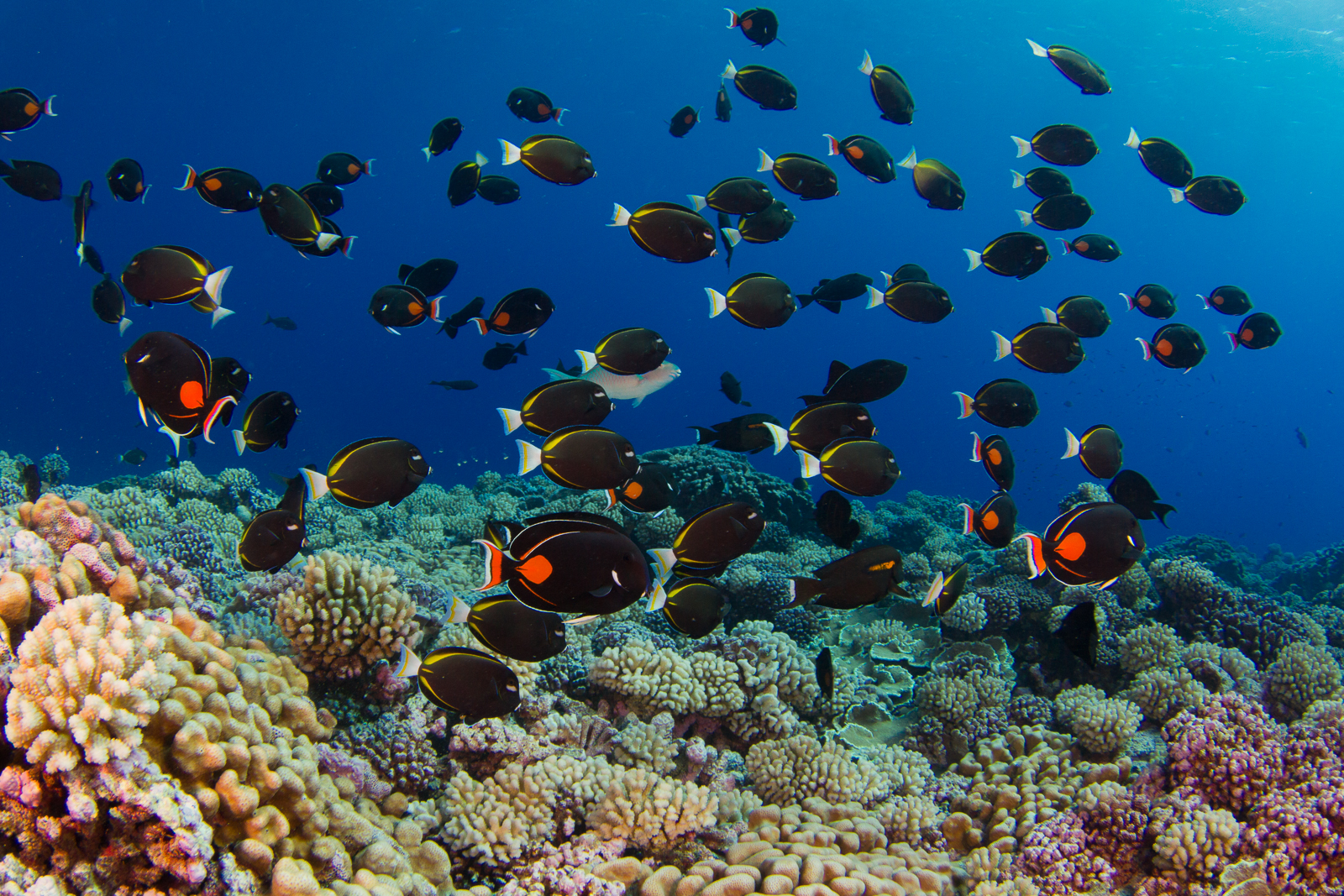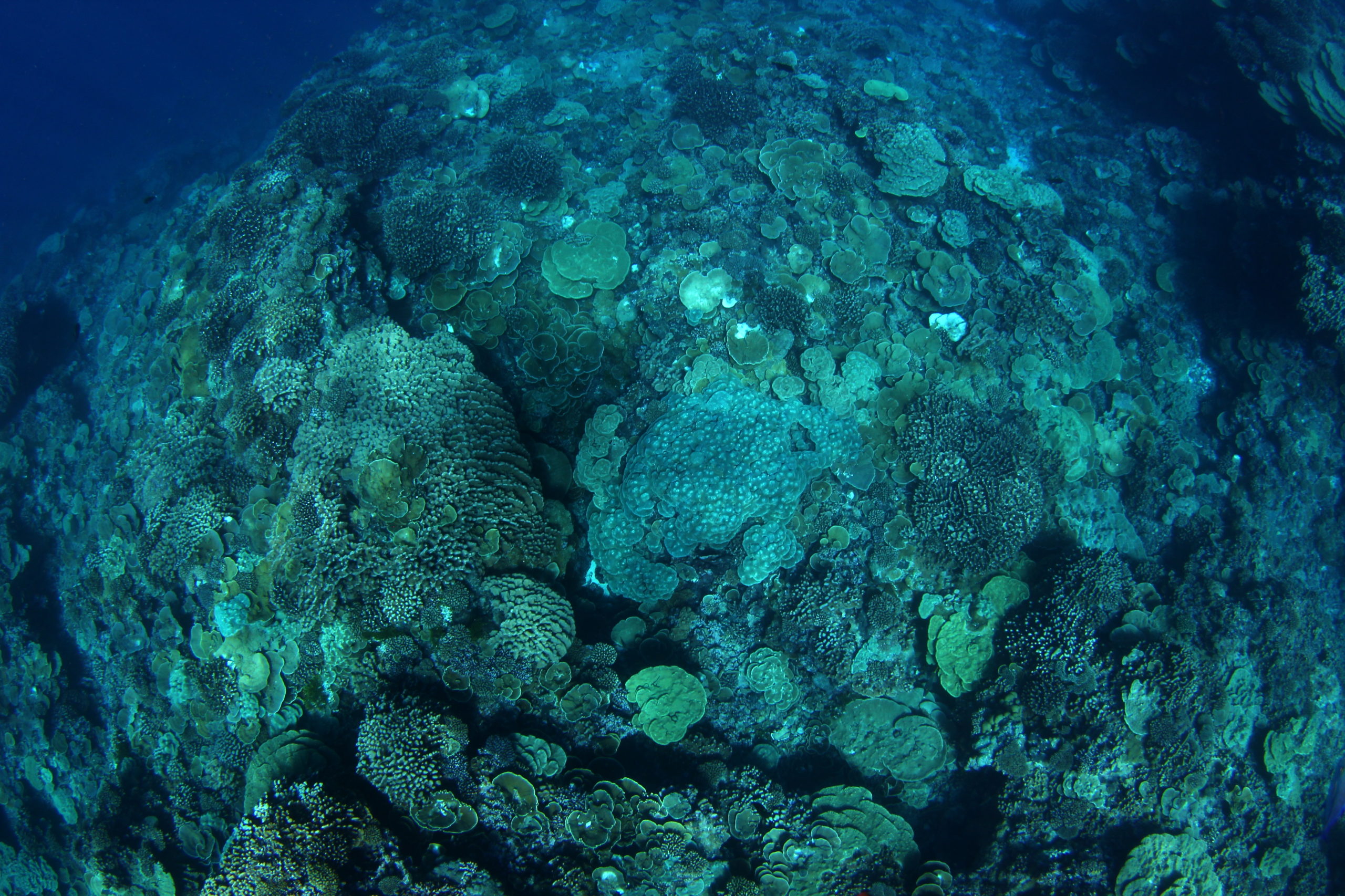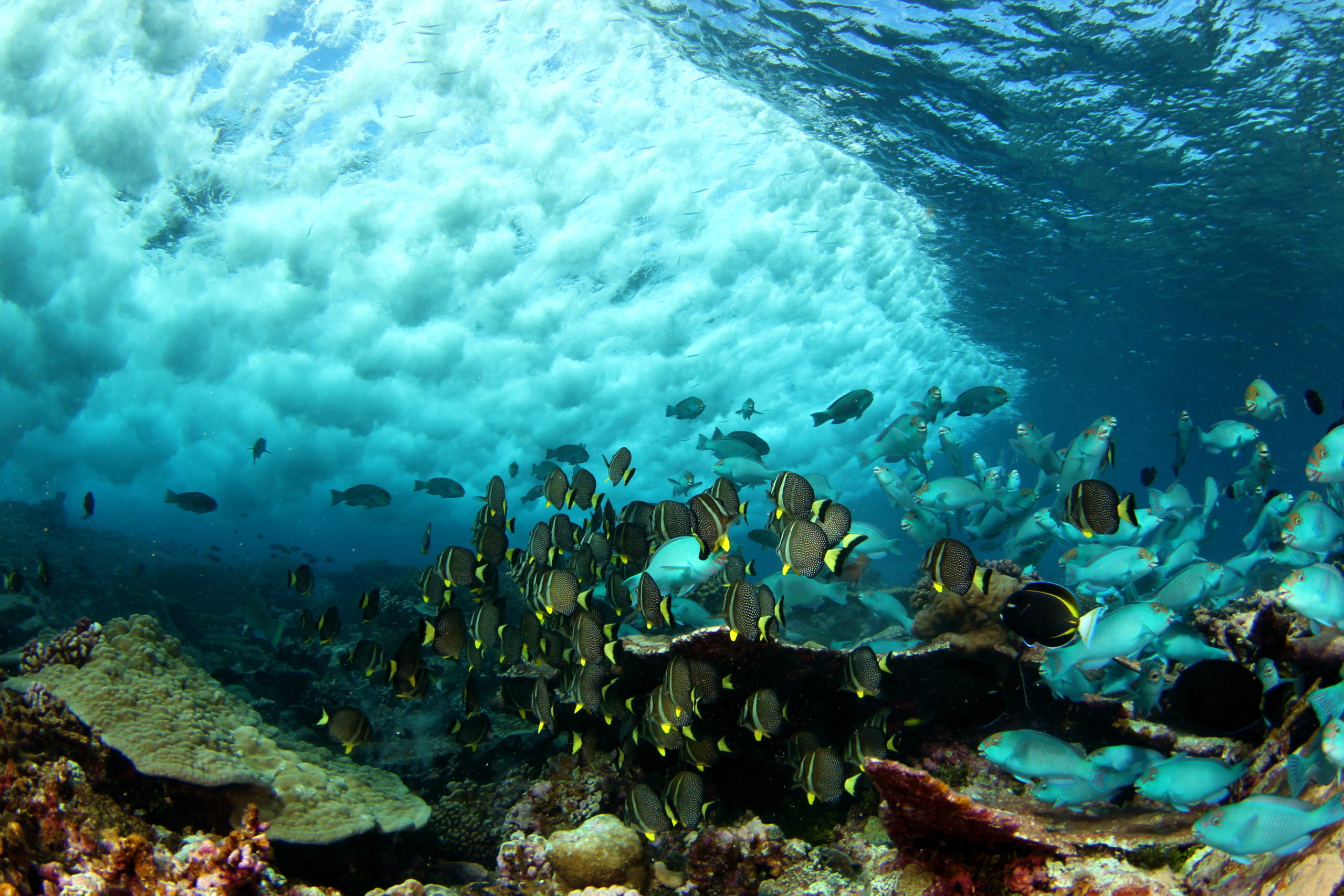APPROACH
The 100 Island Challenge is a large-scale natural experiment, investigating the independent and interacting effects of oceanography, geography, and human activities in affecting the structure and growth of coral reef communities.
We use a rigorous and repeatable sampling protocol, which employs classical methods for collecting high-resolution data (fish, benthic, oceanographic) combined with novel reef visualization products (i.e., large area imagery).The natural experimental design uses islands as statistical replicates, as we select focal islands to span a diversity of combinations of human activity, oceanographic conditions (principally temperature and nutrient delivery), and island geomorphology.
We aim to learn about community ecology including large, long-lived organisms, and thus we cannot use tools in classical manipulative experiments. Instead, we call this a ‘natural experiment’ in which we use existing variation of key drivers of community structure, but control for too much noise by constraining our study to the same habitat and same depth on each of the 100 islands.
We conduct two surveys (separated by 2-3 years) for each island, providing an invaluable opportunity to document the structure of the reefs as well as document (potential) change through time.By using a collection of survey technologies coupled with the application of ecological theory and quantitative models, we are gaining important insights into the relative condition of coral reefs from across locations.
Further, by using a large-scale geographic scope we are able to span the variety of environmental conditions within which coral reefs are found today, providing novel insights into the workings of this ecosystem. Importantly, we make all of our data widely available to inform and educate managers, scientific colleagues, and other stakeholders about how coral reefs work and what is needed to ensure reef persistence into the future.
STUDY SITES
Our goal is to collect reliable, repeatable, and comprehensive data from a broad collection of coral reef environments from across the globe. The selection of regions and islands within regions is strategic, with an aim to capture the variability of environmental conditions that exist across modern coral reefs while ensuring operational feasibility. Coral reef habitats range in ecology and condition based upon many factors, with a large influence of each oceanographic condition (e.g., productivity, sea surface temperature, wave energy) and level of human influence.
Within each region we will target a collection of islands that span the range of conditions readily observed – for example islands with high and low oceanic productivity (satellite derived Chlorophyll-a as a proxy for productivity) and islands with high and low human population sizes. Beyond the targeted islands, we will opportunistically visit additional islands within each region to capture more insights about the variability of reefs across the globe. These opportunistic islands will be of value by providing reliable and comparable data that complement existing research and management efforts among global partners. Given such a sampling design, we will be well-poised to describe the current state of coral reefs globally and to contribute invaluable insights into how and why the reefs are changing through time.



